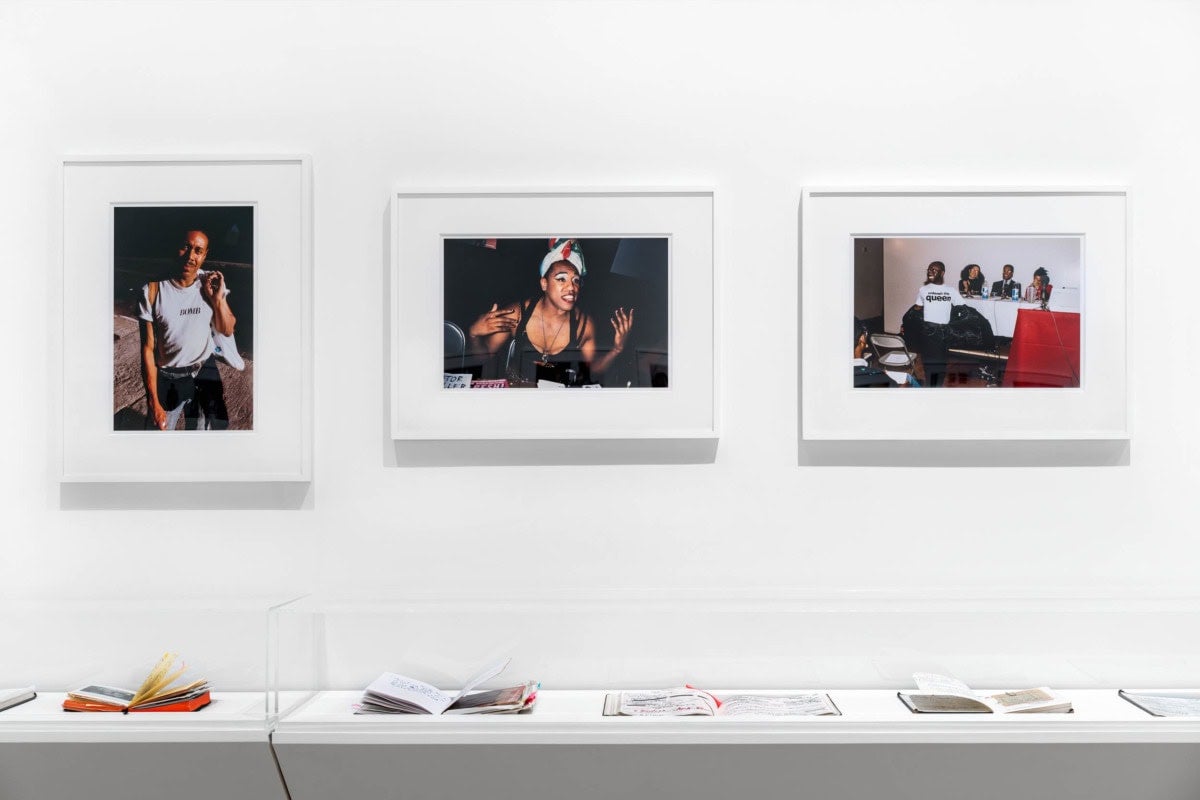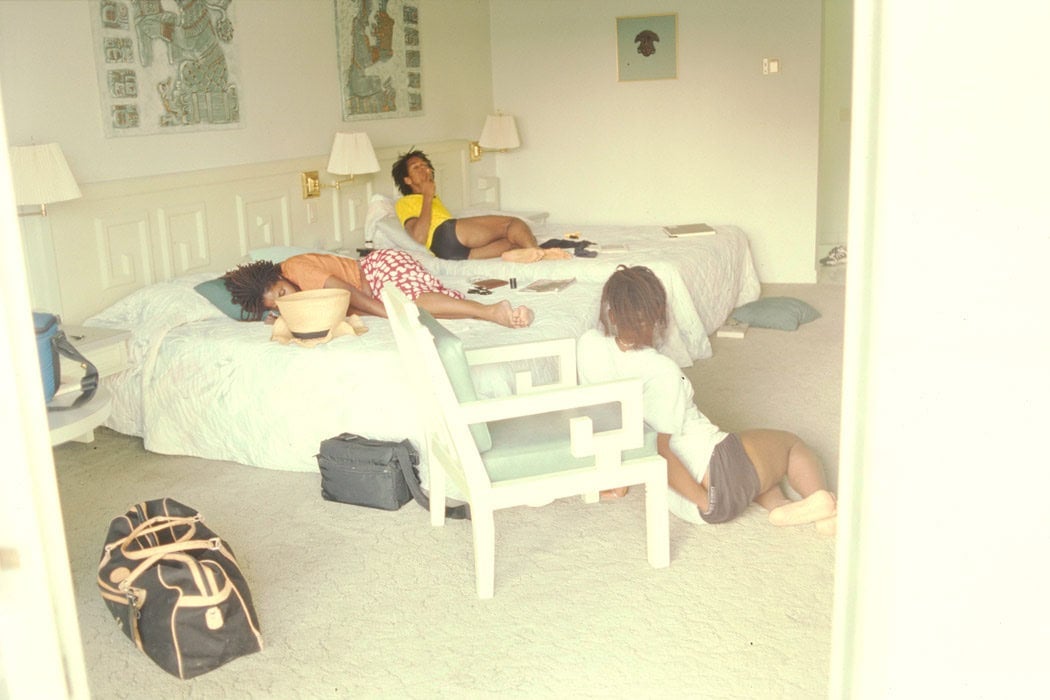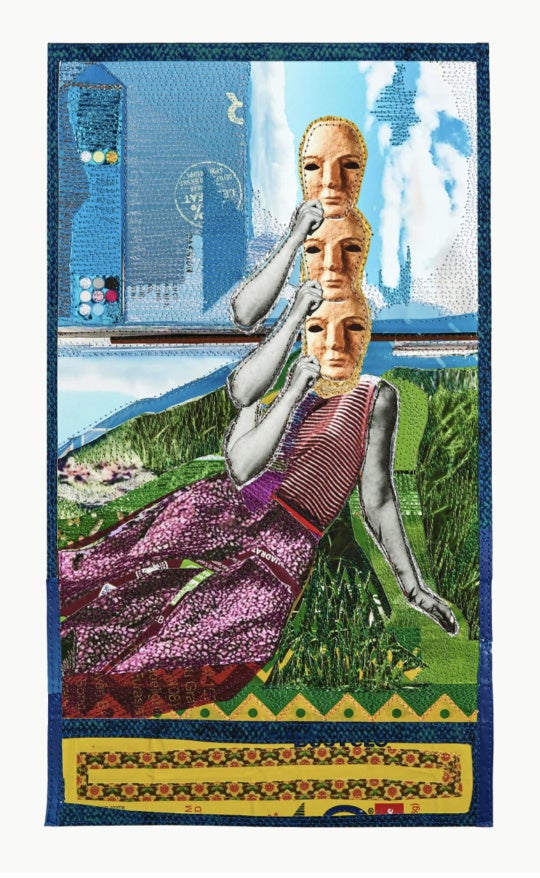
It’s 1991.
The setting is the Black Popular Culture conference at Dia Center for the Arts, New York. A beaming, bespectacled Marlon Riggs is carrying (Oh, Marlon!). His jacket rests off his shoulders, revealing his white T-shirt printed with black type. It reads: “Unleash the Queen.”
“Of course, Miss Girl will have to read somebody: that’s part of the performance we all expect,” Riggs declared in his lecture delivered at the conference. And who did Miss Girl read? The luminous coterie of Black intellectuals assembled in the audience—a coterie lovingly documented by the photographer Lyle Ashton Harris in his Ektachrome Archive.
An exhibition now on view at ICA Miami supplies an abbreviated but invaluable glimpse into that archive, a rich collection of over 3,000 slides taken between 1986 and 2000. ICA’s selection mostly captures the vibrant, absorbing Black intellectual activity that pulsed throughout the 1990s. We are whisked back to pivotal events: the Black Popular Culture conference, Black Nations/Queer Nations?, the Whitney Museum’s Black Male show. Behold the fruit of the struggle to establish Black studies departments and the demonstrations staged at art museums in the 1960s and 70s.
Harris’s archive is thrillingly populated: There’s bell hooks and Michele Wallace and Cornel West and Carrie Mae Weems and Barbara Smith and Isaac Julien and Angela Davis and Manthia Diawara. Stuart Hall, that perspicacious theorist and pioneer of cultural studies, gazes into the camera, his copy of The London Review of Books just visible in the frame. These scholars, writers, and artists irradiated dim, inert academic disciplines, utterly invigorating them in the process.

Mention of these names doubtless conjures up the rarefied world of the academy, but Harris’s archive resists becoming insular. Again and again, it gives us intimate images of his friends and lovers. A pride parade in San Francisco, a beach at Martha’s Vineyard, lunch in Venice. The show ostensibly offers a slice of intellectual history, but it’s an education in tenderness, too.
Consider the glowing hotel room in Mexico that floats in reverie. Harris, cool and languid, smokes a cigarette. His friend and fellow photographer Renee Cox is curled in sleep. And his older brother, Thomas, is caught with his hand in his underwear, rubbing his ass blithely.
Certain faces elicit especially poignant recollection. Maurice Berger, who died of COVID-19 in March 2020, clasps a stack of folders against his torso. His countenance bears the same calm diligence that marks his scholarship. And there’s Riggs, again, seated in Oakland in 1994, now an almost spectral presence, starkly, grimly backlit. He’s about to swallow some pills, some dulling regimen of antiretrovirals or other. He was swallowed by AIDS that year.
One wall is lined with a row of vitrines containing Harris’s journals. Encased in them are all the emotional textures and all the rhythms of everyday life, syncopated as they are by friendship, ambition, desire. I love the little fortune pasted to one page: “Everything will now come your way.”
Nan Goldin, whom Harris has photographed, famously set her 1985 work The Ballad of Sexual Dependency to a rollicking soundtrack. What soundtrack might we put together for the Ektachrome Archive? Would it be anachronistic or contemporaneous, muted or boisterous? Perhaps a bit of everything. I’ll take a modest stab (feel free to add your own suggestions).
1. A.R. Kane – Miles Apart
2. Taana Gardner – Heartbeat
3. Mariah Carey – Fly Away (Butterfly Reprise) (Def ‘B’ Fly Mix)
Lyle Ashton Harris: Ektachrome Archive is on view at ICA Miami through November 21, 2021.




